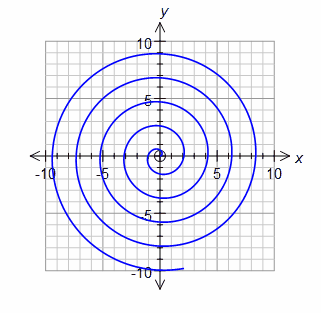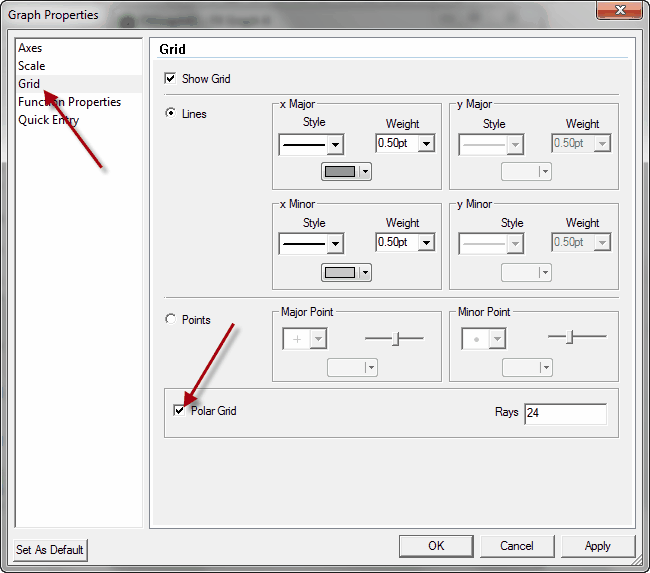Polar functions are entered in terms of r and θ. Because there is no θ key on a computer keyboard, the graph tool uses th to represent θ.
You can enter a normal polar equation such as r = 5 sin 3θ by typing
r = 5 sin 3th
or
5 sin 3th
The r = is optional and will be assumed if you do not enter it.

the graph tool can also draw inverse Polar functions - just enter them in terms of r.
th = 3r
th = 1/r
th = pi/4

As shown above, the graph tool can draw polar grids. Go to the Grid page and check Polar Grid

Default Domains
Cartesian and Inverse Cartesian functions have an "implied domain" - the bounds of the axes you have drawn the function on. If you have not explicitly set a domain, the graph tool can automatically determine a suitable domain from the axes it is using. For Polar graphs, there is not a natural domain that can be easily determined. To counter this problem, the graph tool uses some default domains for polar graphs.
Polar graphs 0 ≤ θ ≤ 360 (degrees mode)
0 ≤ θ ≤ 2π (radian mode)
In most cases these default domains produce acceptable results. Sometimes you may need to override the default domains in order to create the result you are after.